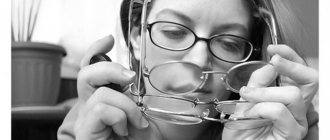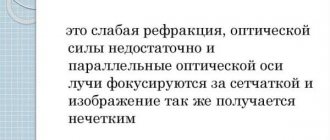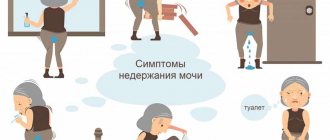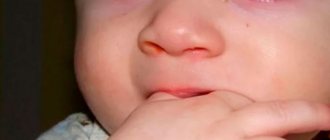- Photo-Video
- Reviews
- Articles
- Licenses
- Vacancies
- Insurance partners
- Partners
- Controlling organizations
- Schedule for receiving citizens for personal requests
- Online consultation with a doctor
- Documentation
Cystitis is an inflammatory disease of the mucous and submucosal layer of the bladder. Cystitis is one of the manifestations of urinary tract infection in children.
Acute cystitis begins with a urinary disorder. Children have an urgent urge to urinate every 10-20-30 minutes. The frequency of urination depends on the severity of the process. Cystitis occurs in children of both sexes and of any age, but more often occurs in girls of preschool and school age.
Adolescent children report pain in the lower abdomen, in the suprapubic region, which intensifies when palpating and filling the bladder. At the end of urination, pain may be observed at the base of the bladder, urethra, and penis in boys. Urinary incontinence may occur.
In young children (up to 3-4 years old), the symptoms of acute cystitis are nonspecific. It is characterized by an acute onset. The child is restless and cries during urination, urination is frequent. In young children, the infectious process is poorly localized; the spread of the microbial inflammatory process into the upper urinary tract is often observed, which leads to general symptoms in the form of toxicosis and fever. Such manifestations are often absent in children over 14 years of age, whose general condition is slightly disturbed by cystitis. Usually, there is no manifestation of intoxication, temperatures are within normal limits, which is due to the peculiarities of the blood supply to the mucous and submucosal layer of the bladder in older children.
In chronic cystitis, all layers of the bladder wall (mucous membrane, muscle layer, outer layer) are involved in the inflammatory process. Manifestations of cystitis depend on the form and nature of the course of cystitis.
The incidence of cystitis in infant boys and girls is approximately the same. At older ages, girls get sick more often than boys. The average age of children at the onset of chronic cystitis is 4-5 years.
The highest incidence of cystitis in girls is due to:
- the proximity of the urethra to natural reservoirs of opportunistic microflora (vagina and anus),
- short urethra,
- the presence of concomitant gynecological diseases (vulvitis, vulvovaginitis).
Therefore, in the prevention of cystitis, compliance with the rules of personal hygiene is important.
The main causative agents of cystitis in children : Escherichia coli, fecal streptococcus, enterococci, Klebsiella, Proteus, Pseudomonas aeruginosa, yeast, saprophytic staphylococcus. The route of infection is ascending through the urethra.
Acute and chronic cystitis in children
Various inflammatory processes of the urinary system in children are a mandatory reason to seek qualified medical help. One of the most common pathologies in pediatric urology is cystitis. The disease is manifested by the appearance of an inflammatory process on the mucous membrane lining the inner surface of the bladder. Cystitis of various etiologies is diagnosed in children of any age. In infancy, the disease is equally common between girls and boys. With age, girls become more susceptible to the appearance of clinical signs of bladder inflammation, this is due to the anatomical features of the structure of the genitourinary system. In boys over 5-6 years old, cystitis occurs extremely rarely and is usually a consequence of a descending infection. Depending on the course of the disease, cystitis in children can be chronic or acute. Regardless of the type of disease, it requires timely and effective treatment. Without treatment, cystitis in childhood often causes irreversible consequences in the urinary tract and severe complications in other organs and systems.
Causes
Depending on the mechanism of entry of the inflammatory agent into the lumen of the bladder, cystitis can be caused by the following routes of infection:
- Descending infection. In such cases, cystitis in boys and girls occurs against the background of chronic or acute pyelonephritis, urolithiasis of the kidneys and other pathologies;
- Lymphogenic mechanism. The pathogen enters the target organ through lymph flow from neighboring infected organs;
- Hematogenous route, involving the development of a generalized infection from other organs with bacterial infection. Most often, the cause of cystitis in children with this mechanism is bacterial tonsillitis and adenoiditis;
- Ascending infection. It is this path that is most common in adult girls and women. This is due to the anatomical proximity of the anus and urethra. Most often, cystitis in children is caused by the opportunistic bacterium E.coli, the colonies of which are found in the intestines. If the rules of personal hygiene are not observed, mechanical contamination of the urethra with this pathogen occurs, after which the bacteria enters the bladder and provokes the development of inflammation.
The following factors contribute to the development of cystitis in boys and girls:
- congenital anomalies of internal organs;
- hypothermia;
- the presence of foci of infection in the body of any location;
- decreased protective functions of the body, provoked by certain immunosuppressive conditions;
- failure to comply with personal hygiene rules;
- the need to take various medications;
- unbalanced diet;
- allergic reactions;
- intestinal dysbiosis, thrush, etc.
Signs of cystitis in pediatric patients
Regardless of the mechanism of bladder infection, there are specific signs of cystitis in children, these include:
- painful urination (in infants and young patients this process is accompanied by crying or anxiety;
- increased urge to urinate;
- reduction of a single portion of urine;
- change in its color, transparency, appearance of mucus or blood impurities;
- increase in body temperature to fibril values;
- severe weakness;
- pain of varying nature and intensity, localized in the lower abdomen.
The appearance of even one of the above signs of the disease requires immediate consultation with a pediatrician or pediatric urologist. Only a specialist can make an accurate diagnosis and prescribe effective treatment. Self-medication in such situations risks the development of life-threatening complications and can cause disability in adulthood.
Causes of cystitis in boys
Experts include short hypothermia, a viral cold, and low immunity as the main causes of cystitis in boys. In the first year of life, the urethral canal is short, so infection easily penetrates it, causing inflammation of the bladder.
Other etiologies for the development of the disease:
- as a complication of pathology occurring in the genitourinary system;
- improper use of a diaper;
- fusion of the glans penis leads to the accumulation of microbes that cause cystitis;
- phimosis occurring in the foreskin of the boy’s penis;
- location of the catheter in the urethra;
- ignoring intimate hygiene.
Inflammation of the bladder can be caused by microorganisms of sexually transmitted infections, including Klebsiella, streptococci, Staphylococcus aureus, Listeria, Escherichia coli, Enterococcus bacteria, and gonococci.
When should you see a doctor?
If you suspect cystitis in boys, it is recommended to make an appointment with a pediatric urologist-andrologist. He diagnoses and treats diseases of the male urinary and reproductive systems.
Taking into account statistical data, infertility in men is associated with incorrect or untimely treatment of infectious processes in childhood. The tasks of a urologist-andrologist include monitoring the development of the genitourinary system, from the birth of a boy to his adulthood.
The specialist identifies pathologies that can provoke cystitis:
- endocrine;
- nervous;
- vascular.
The boy must be seen by a doctor in the first months after birth. In the absence of signs of cystitis and other diseases, it is recommended to adhere to a schedule with scheduled visits to a urologist-andrologist: at 3 years, 6, 9 and 12 years.
If the following clinical picture develops, urgent consultation with a doctor is required:
- frequent urination, which is accompanied by severe pain;
- urinary incontinence;
- the appearance of pain in the groin area, lower abdomen and lower back;
- the formation of a compaction, protrusion or other formation in the scrotum area;
- the testicles are not descended into the scrotum;
- asymmetrical arrangement of the testicles;
- narrowing or fusion of the foreskin;
- swelling and redness of the genitals;
- absence of symptoms of puberty in a teenager;
- the appearance of female secondary sexual symptoms, including enlarged breasts.
Consultation with a pediatric urologist-andrologist is necessary after an injury received in the lumbar region or surgery on the abdominal cavity. It is recommended to undergo a medical examination after suffering an infectious disease. The most dangerous disease is mumps. Serious complications are caused by mumps. To get a consultation with an experienced pediatric urologist-andrologist, you can contact JSC “Medicine” (clinic of Academician Roitberg) in the center of Moscow.
Prevention
To prevent the development of cystitis, the clinic’s urologist advises parents to monitor the frequency of emptying the child’s bladder and bowels. In this way, you can prevent or identify congestive processes occurring in the pelvic organs.
Other preventive measures:
- constant temperature control;
- prevention of hypothermia;
- timely diagnosis and treatment of infectious processes;
- daily and proper hygiene of the genital organs.
If you follow the above recommendations, you can promptly prevent the occurrence of cystitis and its complications.
Diagnostics
Treatment of cystitis in boys is carried out at JSC "Medicine" (clinic of Academician Roitberg) based on the results of a comprehensive examination. To make an accurate diagnosis, a urologist-andrologist prescribes the following laboratory and instrumental studies.
Laboratory tests include: urine and feces collection, blood donation. If the main signs of the disease are accompanied by an additional clinical picture, other tests are prescribed.
To obtain reliable results, it is recommended to properly prepare for donating blood. 1-2 hours before the procedure you must refuse to eat. Urine is collected in a special container in the morning. The child is washed first.
The feces are collected in a sterile container. The obtained samples are delivered to the clinic laboratory within 1.5 hours.
The doctor examines the boy by palpating the lower abdomen and penis. Urethral swab samples are sent to the laboratory. If compactions are suspected, cytology is prescribed. The technique allows you to determine:
- nature of compaction;
- features of inflammation.
If cystitis is caused by a sexually transmitted disease, serological and bacteriological tests are prescribed. In the first case, bacteria and pathogenic fungi are detected. For analysis, blood, sputum, urine, and feces are collected. The technique allows us to identify the sensitivity of the pathogen to medications.
Based on the results of a serological study, the causative agent of the infectious process is identified. The materials used are:
- deoxygenated blood;
- saliva;
- cal.
The main instrumental examination includes ultrasound of the lower abdomen and kidneys.
Complications of cystitis in children
With timely initiation of specific therapy, cystitis in boys and girls has a favorable outcome and rarely becomes chronic. Without seeking qualified medical help, cystitis in children quickly progresses and contributes to the development of the following complications:
- glomerulonephritis;
- pyelonephritis;
- vesicoureteral reflux;
- interstitial cystitis;
- adhesive disease in the pelvic organs;
- generalized infections and sepsis;
- acute or chronic renal failure.
These negative consequences often cause profound disability and require long-term and expensive treatment. Therefore, if you suspect inflammation in the child’s bladder, you should not delay seeking help from a specialized medical institution.
Other therapies
A urinary infection has characteristic symptoms, one of which is pain. The first thing parents think about is what to give a 2-year-old child with cystitis in order to relieve pain without causing harm. Some use various folk methods. Doctors welcome this approach only if it is agreed with them.
As an alternative method, the pediatrician can prescribe herbal medicine in parallel with the main treatment. You need to use various infusions and teas carefully and ensure that your child does not develop allergies.
Diagnostics
The diagnosis of cystitis is not made based on the results of a correspondence or face-to-face consultation with a urologist or pediatrician. This requires laboratory confirmation of the infectious process. If a child is suspected of having cystitis, the following laboratory tests are performed:
- General capillary blood test;
- General urine analysis;
- Urinalysis for sterility with determination of sensitivity to antibiotics;
- Urethral and vaginal smear (for girls).
Cystitis requires differential diagnosis with other dangerous diseases, so the doctor may recommend other types of diagnostic measures (ultrasound of the pelvic organs and urinary tract, radiography with contrast, computed tomography, PCR analysis, cytoscopy under general or local anesthesia, etc.)
Treatment
Modern medicine suggests a conservative method of treating cystitis in boys and girls. For this, the following methods of influence are used:
- Specific drug therapy aimed at relieving inflammation. In children, parotid inflammatory medications are most often used; in severe cases, broad-spectrum antibiotics are indicated.
- Optimization of the drinking regime. To quickly evacuate the pathogen and its toxins from the urinary tract, an increase in the portion of excreted urine is required, so small patients are advised to increase their fluid intake through drinking water, compotes, dehydration solutions, fruit drinks, etc.
- Maintaining bed rest.
- Dietary nutrition. The most rational option for cystitis in children is a dairy-vegetable diet. Fried, salty and smoked foods should be excluded from the diet. In addition, it is important to limit your sugar intake.
In most cases, cystitis in children is treated on an outpatient basis; only in infants may emergency hospitalization in a specialized department be indicated. An improvement in general well-being is observed after 2-3 days, but the process of restoration of the mucous membrane is quite lengthy. To prevent cystitis from becoming chronic, you must strictly follow all medical recommendations and complete the full course of treatment.
Prevention
Cystitis, despite its high prevalence, is a complex and dangerous disease, especially for young patients. Therefore, it is extremely important to prevent its occurrence; to do this, it is enough to follow the following simple rules:
- Compliance with personal hygiene standards (frequency of hygiene procedures, regime for changing underwear);
- Balanced diet;
- Prevention of hypothermia in children of any age;
- Hardening procedures;
- Timely treatment of any infectious processes;
- Regular control tests of urine and blood in order to timely detect the disease at an early stage.
Take care of your children!
What causes bladder inflammation in women?
The physiological features of the structure of the female urethra are such that pathogenic bacteria can easily get inside and cause inflammation. This is due to the fact that the channel itself is short and wide. It is also located near the vagina and anus.
Other reasons for the transfer of bacteria into the urinary tract:
- Improper intimate hygiene, as well as its lack. Maintaining hygiene during menstruation is especially important.
- Unprotected sex. If the immune system is weakened or the vaginal flora is disrupted, it can lead to inflammation.
- Transfer of E. coli from the anus when wearing thongs.
However, the presence of opportunistic bacteria in the genitourinary system does not always lead to the development of the disease. They can stay there for several years and not show themselves in any way. Only when the body’s defenses are reduced, for example, during hypothermia, do microbes begin to attack the body and painful symptoms appear. Therefore, the main causes of inflammation are bacteria and immune disorders.
Provoking factors include:
- changes in hormonal levels (menstruation, pregnancy, menopause);
- perineal injury or damage to the urethra;
- frequent colds, which indicates a problem with the immune system;
- lack of vitamins;
- local hypothermia (sitting on a cold surface or staying in cool water for a long time);
- gynecological manipulations;
- congenital pathologies of the development of the genitourinary system, which affect the process of urine discharge;
- sedentary lifestyle;
- rare trips to the toilet, forced retention of urination;
- frequent change of sexual partners.
Cystitis is also often diagnosed in women who suffer from other chronic infectious diseases, as well as obesity.







